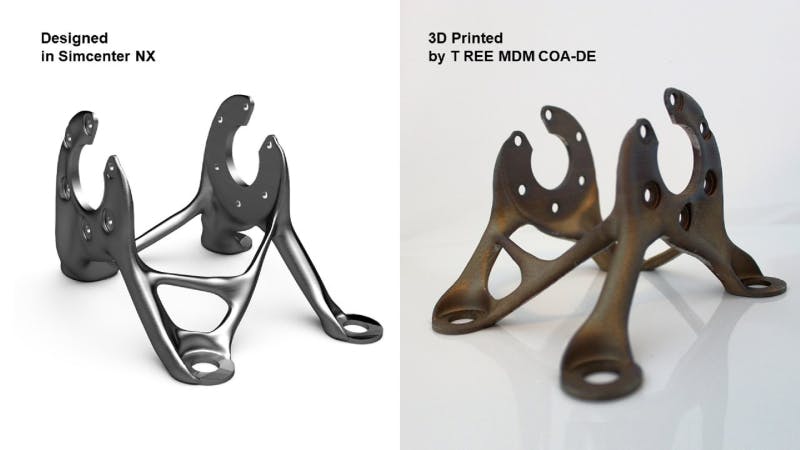Working with additive manufactured (AM) parts empowers the production of increasingly complex designs and enables distributed manufacturing. But predicting the fatigue performance of additive manufactured parts is challenging. The manufacturing process induces multiple local factors that cannot be separated. Therefore, mathematical modeling cannot describe the interaction and influence of these factors. Hence, today, it is too laborious to estimate the fatigue life of 3D printed safety-critical components.
Register to watch our on-demand webinar now and discover how Siemens Simcenter 3D can:
- Integrate machine-learning material model in the open durability solver environment
- Consider different AM process-induced factors that influence fatigue
- Apply to safety-critical structural components
Solve the challenges of additive manufactured parts fatigue
The conventional way of dealing with fatigue does not work with additive manufactured components. It is impossible to test for the endless combination of material conditions and fatigue influencing factors or to separate them and describe their interaction and isolated impact. Also, a database is useless, and no formula can predict SN curves for a random set of material conditions. To solve the fatigue challenge of AM part fatigue, engineers need to connect the process to the material and the part performance, which requires a tool that can show what the fatigue performance corresponds to any given AM condition.
Use machine learning to more accurately model fatigue performance of AM components
Engineers cannot afford to test every additive manufacturing process condition, and even if they could, some are impossible to reproduce on a coupon scale. The solution for accurately modeling fatigue performance of AM components is a machine learning (ML) database. The ML model learns how the individual parameters affect the lifetime to predict fatigue life for any fatigue influencing factors. If testing is limited, the ML model will still make a “best guess” out of the scarce data available, where other methods will perform poorly. Lastly, it can combine different inputs to enrich the dataset and build a single ML model from prior knowledge, own tests, finite element (FE) simulations, empirical rules from literature, or experience.
Integrate durability analysis to accurately predict AM component fatigue
Engineers can use durability analysis to predict fatigue life and adapt the design to ensure safe use of the component. However, engineers need to adjust their durability solver to deal with the local fatigue properties with AM component fatigue. Simcenter 3D solution is a unique fatigue solver that considers AM process-induced local properties in part-scale durability analysis. Integration of the AM-aware durability analysis enables accurate fatigue prediction accounting for process-induced local fatigue-influencing factors and post-treatment. It can evaluate the effect of defects and ensure high-quality printing where needed to increase overall productivity without compromising safety printed parts while helping certify 3D printed components.
Watch the on-demand webinar to expand your reach of where conventional methods fail and accurately predict the correct point of failure and fatigue life of 3D printed parts.
À propos des intervenants

Dr. Michael Hack
Managing Simcenter Durability Simulation Solutions
Michael Hack has 25 years of experience at Siemens in various durability roles. In his current position as Product Line Manager for durability simulations, he combines customer needs with academic research and he has presented and published numerous research projects on hysteresis operators, rainflow counting, thermal fatigue, composite fatigue as well as reliability and optimization topics.

Hunor Erdelyi, PhD
CAE 3D Senior Research Engineer
Hunor Erdelyi has been with Siemens Digital Industries Software for more than ten years, working in various research and development roles. He is currently Senior Manager in the CAE 3D R&D team, focusing on solutions for new materials and additive manufacturing (AM). Hunor and the team help customers with the simulation of AM processes, the prediction of resulting microstructures, defects, and related material properties, and their impact on part scale performance; such as strength & durability.
